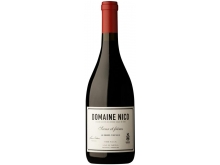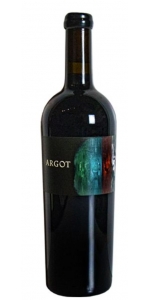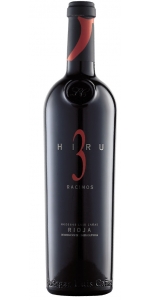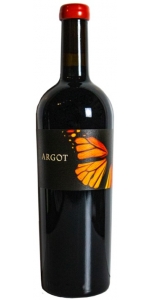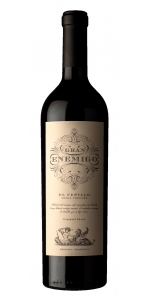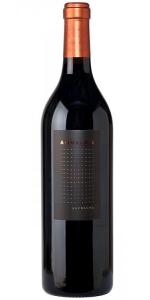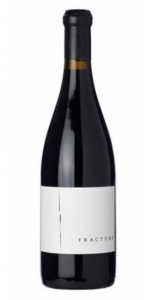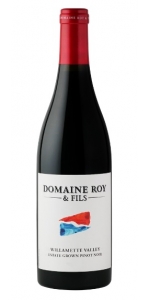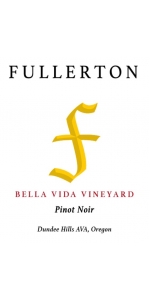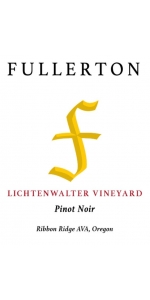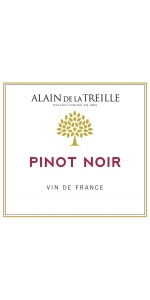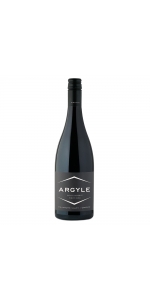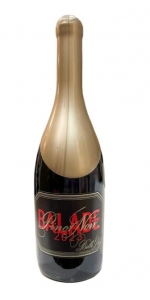Often described as a Booker flagship, Fracture is one of the world’s great Syrah's. Only the softest Syrah in barrel makes the cut for this dense and powerful wine. The namesake pays homage to the calcareous soil in our vineyard, the limestone causes it to ‘fracture’. Deep and mysterious at first sight, the 2018 vintage is rich and velvety on your palate. There is an interesting balance of earth and fruit, with traces of sweet beets, dark plums and chocolate. Though this silky wine will pair with anything, our thoughts are going to salty popcorn by the fire or Dutch Gouda cheese with some black truffle mustard.
Domaine Nico le Paradis Pinot Noir 2016
3 bottles with free shipping for: $720.00
6 bottles with free shipping for: $1,410.00
12 bottles with free shipping for: $2,760.00
| BUY MORE! SAVE MORE! | ||||||||||||||||||||
|
| Country: | Argentina |
| Region: | Mendoza |
| Winery: | Domaine Nico |
| Grape Type: | Pinot Noir |
| Vintage: | 2016 |
| Bottle Size: | 750 ml |
Domaine Nico le Paradis Pinot Noir is made from 100 percent Pinot Noir.
The cool climate vineyard that belongs to Laura and her sister Adrianna Catena feels like paradise itself to Laura. It is lined by trees and fruit orchards, with majestic views of the Andes. Inside the 12 Hectare vineyard, there is a little house with two tiny bedrooms and a kitchen, where Laura dreams of spending a whole month reading books-Laura's version of paradise. The little house is affectionately named Chateau Laura. About the Vineyard The tiny parcel where Le Paradis is grown was planted in 2011 with Dijon 667 Clones over two acres. Wine Production The grapes from this small parcel were elaborated in 15 separate microvinifications.
All the microvinifications were fermented with indigenous yeast. 20% of the microvinifications were fermented with 100% whole clusters in oak roll-fermentor of 600L and low temp (22 Celcius degrees). 40% were fermented with 20% whole cluster in small vats of 800L and 40% fermented in small vats of 800L without sulfites until 4%V/V of alcohol.
Review:
From soils rich in calcium carbonate and sand, in a vineyard 1,600 meters above sea level, this wine comes from a selection of 2.7 hectares that produced very little fruit in 2016, just barely enough to fill 800 bottles. But watch out for this white, with its edge, its minerality, those saline notes that are so characteristic of chardonnay from the chalky Gualtallary soils. The wine was aged for a year in used barrels, and it has some of the toast, but here it’s the deep minerality that dominates.
Patricio Tapia - Descorchados 96 Points
Domaine Nico is the world's first extreme high-altitude parcela Pinot Noir. It is an unusual location for the New World with limestone soil of alluvial origin and cool climate and a labor of love for the Catena family.
The vineyard is named after Laura's daughter, Nicola, whose name pays homage to Nicola Catena, Laura's great-grandfather and founder of the Catena winery in 1902.
Laura has been in love with Pinot Noir since her first travels to France as a teenager. A self-avowed francophile, Laura studied French throughout university. She has a lifelong obsession with authors Sartre and Camus, as well as with the Louvre and the Centre Georges Pompidou, where she has spent countless hours.
With Domaine Nico, Laura borrows from France in the names of the wine parcels and in the concept of individual terroirs, but also plays with the words to give the wines a modern twist that’s reflective of their style.
With 3,675 to 4,921 feet of elevation, Domaine Nico is the world's first extreme high-altitude parcela Pinot Noir. Parcels are extremely small and range within the Uco Valley from Villa Bastais to Gualtallary all within the Tupungato region. With Domain Nico, the Uco Valley proves itself to be a new terroir for the highest quality Pinot Noir.
Domine Nico grapes are sources from small parcels through 15 different microvinifications. All mincrovinifications were fermented with indigenous yeasts, some with whole cluster. The wine ages in French Oak barels with low production across each.
Among the tapestry of historic vineyards in Napa Valley, there are a few standout names, but even fewer sites, if any, involve the rare combination of legendary wine, romance, and a touch of mystery. Bonny’s Vineyard is such a place. This four-acre vineyard in the Oakville District is both a special piece of land and a unique part of Napa history. It was planted in 1974 by Justin Meyer, the winemaker and co-founder of Silver Oak Cellars, as a gift to his wife, Bonny. Ideally situated in a gravelly spot adjacent to Conn Creek on the valley floor, Bonny’s Vineyard was responsible for a memorable string of Silver Oak vintages over the course of two decades.
Justin Meyer stopped producing the Bonny's Vineyard designate after the 1991 vintage. After replanting in 1999, the family has again decided to make a single vineyard bottling. True to the orignal, this is 100% Cabernet Sauvignon aged in 100% American oak barrels for almost 3 full years. The nose exhibits dark fruit aromas of cherry and plum mingling with cedar and cardamom and a hint of eucalyptus. The palate is the heart of this wine, with concentrated fruit on the entry and luscious, silky tannins filling the mouth with an almost endless finish.
As distinct and impressive a terroir as we farm in the Napa Valley. The rocky, gravel-rich soils contribute a distinct sauvage/mineral character, creating a stunning complexity to play off of Cabernet’s natural robust and fruit-driven personality from Oakville. In 2021 Argot added a new vineyard block to our holdings at Bonny’s. Deeper gravel and the famously low-yielding Disney clone conspire towards awesome complexity, and a deeply mysterious, brooding personality. A wholly different Cabernet from its 2021 siblings that you will not want to miss. Only 150 cases produced.
Review:
"Opaque purple-black colored, the 2021 Cabernet Sauvignon Bonny's Vineyard prances out with showy scents of Morello cherries, wild blueberries, and black raspberries, leading to a core of black currant jelly and violets. The full-on, full-bodied palate is densely laden with black and blue berry layers, framed by fine-grained tannins and well-knit freshness, finishing long and earthy."
- 97 Points, Lisa Perrotti Brown, The Wine Independent
Luis Canas Rioja Hiru 3 Racimos is 100% Tempranillo
60 years old vines
Alcohol: 14,5º
Total acidity: 6,0 gr/l
Volatile acidity: 0,50 gr/l
PH: 3,47
Free SO2: 25 mg/l
Reducing sugars: 1,8 gr/l
This wine is a response to our quest to find the perfect wine, one that combines structure, complexity and balance. It is the result of a careful selection of grapes not from the vines but from the appropriate clusters, those that naturally produce three or less clusters and which are 60 or more years of age. Vines situated on slopes and terraces of limestone and clay soil, well exposed to the sun. These grapes are harvested in small boxes at the very best moment, then inspected on the selection table and vinified in small groups at a controlled temperature. After alcoholic fermentation they are macerated to extract their full potential. The resulting most is then settled in new French and American oak barrels to undergo malolactic fermentation. This second fermentation ensures the wine gains in complexity and aromatic intensity, it also stabilises its colour.
Fully ripened and concentrated fruit aromas with balsamic and spicy mineral nuances, notes of blackberry and blueberry preserve wrapped in creamy oak, caramel and milky coffee tones. The palate is concentrated, unctuous in the centre, balanced, sweet, with fine tannins. Very long finish, expressive, clearly marked with the character of the soil.
Hiru 3 racimos is a complex wine and so is its pairing with food. We must consider two options, either drink it in light sips so that the wine itself is the star of the feast, or serve with solid dishes that can match its vigour. An Iberian pork loin with roasted peppers, steak with mushrooms and plums, wild boar stew or pheasant in port are dishes that blend incredibly with this characterful wine.
A dramatic, ridgetop landscape — rising 1500 feet above Lake Hennessey, staring west over Pritchard Hill — persistently influenced by a push/pull draw between The Valley’s floor and Lake Berryessa. This wild, untamed, eastern frontier of Napa Valley, produces singular, terroir-driven wines of captivating beauty, power and lift. An unseasonably wet and cool springtime produced significant shatter at Sage Ridge in 2019, reducing our yields by 50%, leading to a particularly flamboyant edition of this wine.
An incomparable expression of Cabernet Sauvignon — massively pure red fruit character, delivered on a ribbon of ultra-suave tannins and gorgeously seductive high tones. The palate never relents its come-hither posture. Aromatically, puts forth an intriguing botanical complexity that is unmistakably site-specific. As our experience with this one-of-a-kind terroir deepens, we remain endlessly excited for the potential of these unique ridgetop vineyards. Get your hands on a bottle and pull the cork…a wine built for immense near-term gratification.
Review:
"Deep garnet-purple colored, the 2019 Cabernet Sauvignon Sage Ridge Vineyard opens with open-knit notes of plum preserves, baked blackberries and boysenberry jam, leading to a core of crème de cassis, mocha, camphor and Indian spices with a touch of unsmoked cigars. The palate is full-bodied, concentrated and dense with black fruit preserves, framed by soft tannins and seamless freshness, finishing very long and very spicy. Only 75 cases were made. - Lisa Perrotti-Brown"
- Robert Parker's Wine Advocate (November 2021), 95 pts
Enemigo El Enemigo Gran Enemigo is made from 100% Cabernet Franc.
In the spectrum of people who pay attention to detail, winemakers are often incredibly detail-oriented. This can sometimes spill over to become an internal battled, and, as Alejandro Vigil and Adrianna Catena state, "We are our own worst enemy." El Enemigo pays homage to this internal struggle.
The nose presents sweet aromas of black ripen fruits with hints of vanilla and chocolate, which appear after the oak ageing. The mouthfeel is sweet with structured, persistent tannins due to the natural acidity of this wine, leading into an excellent long finish.
Review:
The nose of the 2018 Gran Enemigo El Cepillo Single Vineyard, from a low-yielding and drier year, is full of curry, a note that was a constant across the three vintages I tasted together, but it tends to be stronger in low-yielding and dry years like this. It's also floral and comes through as aromatic and a little exotic, in a good way, with elegance, persistence and very pure flavors. It has fine-grained tannins, great acidity and balance. 7,200 bottles. All these single-vineyard bottlings mature in ancient 4,000-liter oak foudres for some 15 months.
-Wine Advocate 97 Points"Pretty and inviting on the nose with gorgeous aromas of floral violet, cassis and completed with a lifted, delicate liquorice note. The palate is graced with deep herb, pepper, crunchy red fruit and graceful, silky tannins."
-Decanter 97 Points
Bodegas Alto Moncayo Aquilon Garnacha is made from 100% Garnacha.
The wines of Alto Moncayo are crafted to express the unique terroir of windswept high elevation Campo de Borja DO; and to serve as a benchmark for world class Old Vine Garnacha.
Aquilón is "The jewel in the Crown" a selection of the best barrels from the best lots. The vines are 60-100 years old.
Review:
This garnet-colored wine offers aromas of black currant, black raspberry and black licorice, with just a touch of charcuterie. The fruit flavors shine through with subtle notes of crushed violet. It has soft tannic structure, with a pleasant bit of grippiness in the post palate as it leads up to the long, long, finish.
-Wine Enthusiast 95 Points
About the Vineyard
Vineyards in Tabuenca and Borja, planted with indegenous clones of Garnacha starting in the 1920s.
Wine Production
The selected highest quality grapes are placed into small stainless-steel tanks of 7 tons capacity. The must is basket pressed and fermentation is finished in new French and American oak where it complets the malolactic fermentation. Wine is aged in the barrels for 24 months before bottling.
Tasting Notes
Appearance: Very deep red, scarlet rim
Aroma: Minerals and vanilla. Hints of raisins and dark Chocolate
Palate: As typical of the vintage, power and intensity with disarming elegance.
Food Pairing:
Goes well with beef, pork, game based stews and rice dishes.
Booker Fracture is made from 100 percent Syrah.
Review:
The 100% Syrah 2019 Fracture comes all from the Booker Estate Vineyard and is another pure, balanced, incredibly classy wine from this estate. Loads of darker fruits, ground black pepper, crushed stone, and scorched earth give way to a medium to full-bodied, powerful, concentrated Syrah that will benefit from 2-4 years of bottle age and cruise for 10-15 years.
-Jeb Dunnuck 97 Points
Dark purple. An exotically perfumed, expressive bouquet evokes ripe black and blue fruits, Moroccan spices, olive paste, licorice, potpourri and incense. Densely packed and impressively energetic in the mouth, offering intense blackberry, cassis, kirsch, fruitcake and floral pastille flavors that firm up slowly through the back half. The floral and spice notes repeat emphatically on an impressively long, youthfully tannic finish that leaves smoky mineral and licorice notes behind.
-Vinous 97 Points
Maison Roy Willamette Valley Pinot Noir is made from 100 percent Pinot Noir.
The Willamette Valley Pinot Noir combines fruit from Roy's Dundee and Yamhill-Carlton estates. Gentle and suave, this Pinot offers inviting red fruit, baking spice, and a touch of purple floral tone. On the palate, a soft tannic structure makes this wine friendly and accessible in its youth and will keep drinking very well for the next 5-7years.
Fullerton Three Otters Pinot Noir is made from 100% Pinot Noir - 40 years old
11 months in 25% new Oak and 75% neutral
Bella Vida Vineyard is perched high in the heart of the Dundee Hills. This picturesque site provides elegant fruit from the storied Jory soils of the AVA. LIVE certified.
Aromas of cherry and raspberry flow into finely-tuned layers of cedar, cocoa, licorice, and baking spices. The palate pulses with energy as the silky tannins and gorgeous mid-palate captivate your senses. A radiant and profound experience.
A co-fermentation of Dijon clones 113, 667, and 777, this wine expresses the volcanic soils of the Dundee Hills elegantly, yet powerfully. Upon arrival, the grapes were immediately de-stemmed into an open-top two-ton fermenter. Following a seven day cold soak, the wine started fermenting slowly at a cool temperature. To manage extraction, we utilized one to two punch-downs and one pump-over per day, with two rack-and-returns at the beginning and middle of fermentation. As fermentation neared the end, the must was heated to achieve a peak temperature of 94° F resulting in optimum extraction, and then we immediately chilled the wine to extend the time on the skins, while switching to one pump-over per day to limit harsh, seed-tannin extraction. After a total of 19 days on the skins, we drained and pressed the wine, keeping the free-run and press fractions separate. This bottling contains only the free run fraction. Following two days of settling, the wine was racked to barrel and aged for 11 months in 25% new French oak and one month in tank prior to being bottled unfined and unfiltered.
Review:
Vivid red. Displays fresh red/dark berry and pungent floral aromas, along with suggestions of cola, mocha and five-spice powder. Appealingly sweet and energetic on the palate, offering intense black raspberry, cherry-cola, spicecake and rose pastille flavors that tighten up slowly on the back half. Fine-grained tannins frame the well-defined finish, which lingers with impressive, red fruit liqueur-driven persistence. (all de-stemmed fruit and 25% new French oak). - Josh Raynolds" - Antonio Galloni's Vinous (June 2019), 93 pts
Fullerton Lichtenwalter Pinot Noir is made from 100% Pinot Noir - 10 years old
12 months in 100% neutral French Oak
On the western slope of the south-facing Ribbon Ridge sits the lovely Lichtenwalter Vineyard. Here Willakenzie soils, derived from ancient sedimentary seabed, coax black fruits and concentrated spices out of the wines.
Aromas of blackcurrant, blueberry, blackberry, and black cherry with concentrated spices followed by hints of sandalwood, smoke and oolong tea. Depth in the mid-palate pairs with balanced acidity, and so, yet structured tannins. The Willamee Valley’s smallest AVA speaks clearly and compellingly through this wine.
This wine comes from 100% destemmed rotator barrels fermented at ambient temperature reaching a peak temperature of 73° F. The rotator barrel spun twice daily during fermentation yielding a gentle extraction. Aer fermentation, the wine went through a three-week extended maceration, allowing the tannins to polymerize, soening the wine. Aged for 12 months in French oak barrels and three months in tank, the wine was then boled aer filtration.
Review:
"Deep, brilliant red. Smoke-accented cherry, blackberry and violet scents show very good clarity and pick up a hint of spiciness with air. Chewy and focused on the palate, offering appealingly sweet dark berry and spicecake flavors that are braced by a spine of juicy acidity. Dusty tannins build steadily on an impressively long, penetrating finish that strongly echoes the cherry and floral notes. (all de-stemmed fruit and all neutral French oak, made entirely from the 777 Dijon clone°. - Josh Raynolds"
- Antonio Galloni's Vinous (June 2019), 92 pts
Alain de la Treille Pinot Noir is beautifully balanced with an elegant ruby robe. The mouth is velvety with black cherry aromas.
Average age of the vines: 25 years.
Classic red vinification and Maturation in stainless steel vats.
Malolactic fermentation.
Wine is filtered before bottling.
It delights those who prefer drinking red wine with fish and is an ideal partner with charcuterie, white meats and mild cheeses.
Argyle Reserve Pinot Noir is made from 100 percent Pinot Noir.
Pinot Noir thrives in Willamette Valley's long growing seasons with cool autumn breezes and sunny days. This culmination of extra time on the vine yields aromatics of crunchy dried leaves, pomegranate molasses, black tea leaves, and tart cherries. Earthy undertones and great textured tannins that continue to smooth out with time - adding to the body and longevity.
Review:
Rich and polished, this Pinot offers multilayered raspberry and blueberry flavors. Shows dusky spice and fresh forest floor accents while building structure toward refined tannins.
-Wine Spectator 93 Points
Belle Glos Balade Pinot Noir is made from 100 percent Pinot Noir.
Tasting Notes
he word "Balade", French for "Wandering," is a fitting term for Belle Glos' annual exploration of single-vineyard pinot noir tracts on the west coast. As such, each vintage is very limited.
This Pinot Noir opens with aromas of blackberry, cherry, and delicate floral notes mingling with hints of cedar and baking spice. On the palate, you’ll experience layers of dark plum, juicy black raspberry, and subtle undertones of cocoa and vanilla, all wrapped in a plush, silky texture. Soft tannins and a balanced acidity contribute to a smooth, lingering finish, making it a perfect match for grilled meats, roasted vegetables, or simply as a luxurious glass to enjoy on its own.
Review:
This appellation is an ideal place to produce this brand's bold style of Pinot Noir, as elegance persists with power. In this bottling, aromas of black plum, blackberry and mahogany lead into a rich, creamy palate layered in wild mint, pepper and dark fruit. A searing acidity leads into a candied vanilla finish.
— Matt Kettmann Wine Enthusiast: 94 Points
- back
Sokol Blosser Big Tree Block Pinot Noir is made from 100 percent Pinot Noir.
1970 was winding down when our founders, Bill Blosser and Susan Sokol Blosser pulled their ’68 VW Camper up to an abandoned prune orchard some 30 miles southwest of Portland. These moonstruck kids had little farming experience and just a basic knowledge of winemaking. What they did have, in abundance, was a passion for growing the Pinot Noir grape and creating world-class wine. Soon after settling on this extraordinary land, they planted their first vines and cinched their place as pioneers in Oregon’s budding wine industry.
Review:
A very impressive wine for the striking sense of spice, white-pepper and briary, forest notes, across red cherries. The palate has sapid, focused style with such taut yet silky tannins holding long and true. Pure red cherries here. Drink or hold.
-James Suckling 94 Points
Ferren Pinot Noir Sonoma Coast is made from 100 percent Pinot Noir.
100% native fermentation (primary and secondary), long cool fermentations often lasting up to a full year, minimal lees stirring, no additions of any kind (commercial yeast, water, acid, enzymes, etc., never any fining or filtration). Aged 18 months in 15% new French oak (Francois Freres, Vosges, Troncais Forrests)
Review:
A lovely and balanced wine that is pleasurable and complex. Spices, cherries, dried cranberries, mixed berries, bramble fruit, black truffles and forest floor. Salty minerality and orange zest in the finish. Medium body. Drink now.
-James Suckling 94 Points

